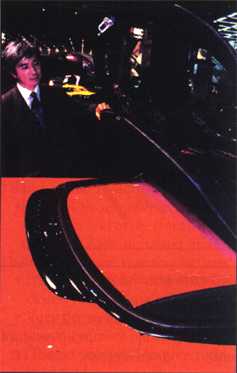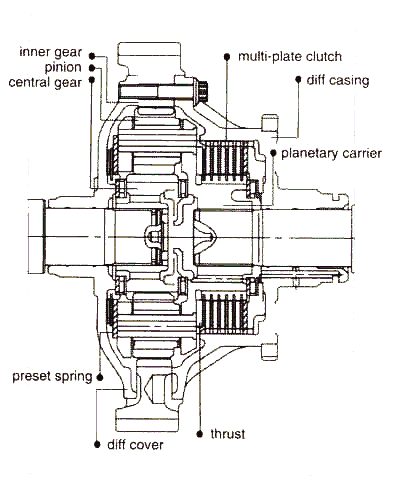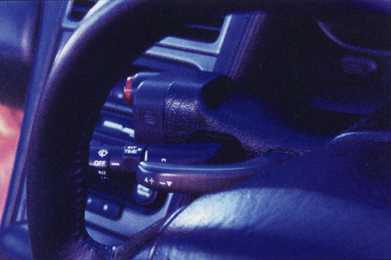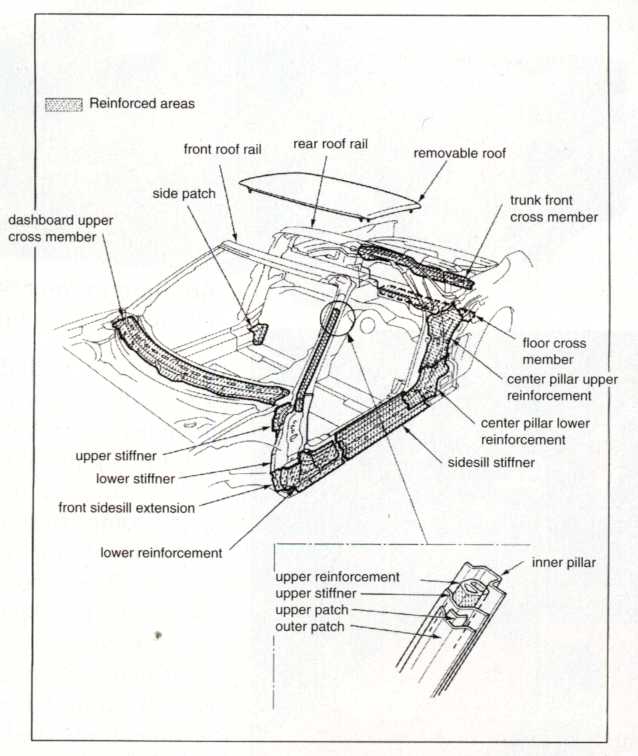
reprinted from Automotive Engineering, June 1995
NSX update
Honda's mid-engined super sports car, the NSX, which carries the prefix Acura in the U.S., has undergone its first redesign/refinement, and in the process gained a Targa stablemate and a finger-tip-shift automatic.
An open-top version was not in Honda's original NSX program; it was thought that cutting off the roof would rob the car of precious structural rigidity, and that there were be enough demand to occupy the Takanezawa plant fully for years to come. Yes, years in a bubble economy, but good things did not last and the bubble burst. In the meantime, the all-important U.S. market was crying for an open-top model. Porsches and Ferraris are available topless, and surely a technologically advanced Honda could meet the challenge. Indeed, it did.

The end result is as follows: the NSX-T (T for Targa) is 40-kg heavier than the latest coupe model, having a mass of 1360 kg; it is still an aluminum monocoque; the open-top body is ~30% less rigid than the coupe. Honda engineers maintain the T is still a rigid car with strategic reinforcements applied to the shell. It is not a car to challenge the record lap time at the Nurburgring (the R-type is cut out for that, although its production time is now limited, as forecast in the beginning–the smaller production run means that its status rises[)], however, it is perfectly capable of satisfying the customer with exhilarating performance and exemplary road manners. The T, by the way, was taken to the hallowed 'Ring in Germany's Black Forest where Honda maintains a small test unit, and went through rigorous testing and evaluation.
 |
| Removed roof panel is stored atop the engine bay, as demonstrated by Honda's RAD (representative of automobile development) Shigeru Uehara, "father" of the sports car. |
Reinforcements and strengthening to the T shell include: thicker, extruded side-sill members, each of which now has four boxes in its cross section, instead of the coupe's two; the A-pillar base uses thicker-gauge sheet and has reinforcements added; the B-pillar has reinforcement members at mid-height and in its base, and the luggage compartment is of thicker gauge sheet; reinforcement is added to the rear floor crossmember, which is now double-box sectioned; the dashboard upper member is given a reinforcement member within; the upper A-pillar/windshield frame is of thicker gauge and has two layers of reinforcement added; the upper windshield frame is of thicker gauge material, ditto the rear roof rail; and the center bulkhead/firewall is of thicker gauge and a reinforcement sheet is added. Further, the engine bay's top is braced by a triangular strut-tower bar.
 |
| NSX adopts drive-by-wire throttle control. |
The aluminum roof panel is manually detachable, like the Civic del Sol's manual roof, and is neatly stored atop the engine bay.
A number of reinforcing and strengthening measures are also incorporated in the coupe body, which uses thicker gauge sheets in critical areas. Honda claims its torsional rigidity is enhanced by 5%, with a 4-kg increase in mass. Efforts were made to reduce mass in other areas. For example, an aluminum rear bumper beam is 2.5-kg lighter than the previous steel bar, drive-by-wire eliminated ~3 kg mass in accessories, a smaller power-steering unit reduced 1.9 kg, and a smaller starter motor another 1.0 kg.
 |
| Torque-reactive preload limited-slip differential. |
There is no mechanical linkage between the accelerator pedal and the engine; the driver's intent is relayed by the dual-circuit accelerator sensor to the PGM-FI (programmed fuel injection) ECU. It allows very precise throttle control, in 0.1° increments, and lightens the accelerator pedal movement–close to the type R's pedal feel, according to Honda.
 |
| Steering-column-mounted paddle manually selects gears in the "F1 automatic" transmission's M mode. |
In conjunction with DBW (drive-by-wire), a new traction control system is adopted, employing an additional lateral accelerometer sensor. The new TCS responds much quicker and more naturally to prevailing conditions.
The "F-matic" is a small, paddle-operated, manual gear-selection function added to the four-speed automatic. Pulling the steering-column mounted paddle up shifts the transmission up a gear, and pushing it down allows downshifting. Pull or push the paddle twice, and it skips a gear, provided the vehicle is not in an unsuitable speed/rpm range. Stop at a sign or traffic light, and the transmission automatically shifts down to first gear. The transmission may be left in "D," where it will perform normal automatic shifting. The tachometer has a shift-position indicator, and the manual gate is marked "M," with a window displaying the selected gear.
 |
| Some of these reinforcements are shared with the coupe. |
The manual-transmission model is equipped with an improved torque-reactive, preload-type, limited-slip differential. It doubles acceleration force on a split-µ surface, starting in second gear using 4000 rpm, according to Honda. Also, on a 15-meter-radius dry skid pad in second gear at 4000 rpm, it generates ~10% more lateral acceleration force than the previous NSX (0.255 vs. 0.230 g).
Jack Yamaguchi